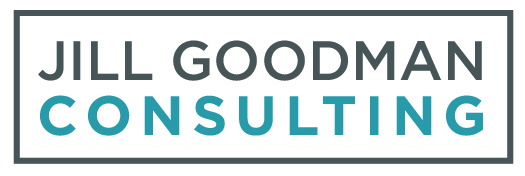The Goldilocks Theory of Parent Engagement
Not too much, not too little, but just right. Whether I am talking with a school leader about enrollment retention or development, the elusive, perfect balance of parent engagement inevitably comes up. We all believe that an engaged parent, one who is interested in the success of their child and the school and motivated to find a sense of belonging for their family in the school community, contributes to high retention and donations. So, why is it hard to find that sweet Goldilocks spot?
I see this as a three-fold issue: 1) lack of clarity about boundaries, 2) failure to create meaningful opportunities to participate that are mission-aligned, and 3) refusal to acknowledge shifting culture.
A case study may be helpful.
A few years ago, I received a call from a development director at a large, faith-based girls’ school. She had eight people in her shop and was raising over $4M for the annual fund.
“I am about to lose it,” she said in our conversation.
I encouraged her to tell me what was happening.
“I have a highly effective, talented team and we are spending more than 20% of our time planning parent-driven parties. We are at the mercy of the Mothers’ Club and the Fathers’ Club. We are afraid to say no to anything because we don’t want to rock the boat, cause problems, or risk losing any parent engagement. But, the myriad of parties are getting more and more ridiculous. Last week, my team was told, told, by the Mothers’ Club to plan a pink margarita party to usher in Spring! My event coordinator spent hours with the committee chair of the Mothers’ Club picking the right shade of pink for the napkins. And the worst part of all this is that these events do not generate any gifts and seem to attract the same small group of parents.”
We decided to work together to find a new approach to a situation that did not serve development well, and I suspected it was also not serving their community well. After evaluating the entire program of parent events, meeting with parents and administrators, and forming a Task Force to prioritize the findings, the school opted to lean heavily on its mission, which had been newly revised in a strategic planning process.
The results:
1. The school leveraged the role of the newly hired Vice President for Mission Alignment to create an evaluation rubric for parent programs and activities to ensure mission alignment. With the rubric in place, about 50% of activities were eliminated for reasons like the presence of alcohol on campus, redundancy, lack of community service component, lack of inclusivity, or lack of family focus.
2. Of the 50% that remained, 90% were reimagined to ensure closer mission alignment. For example, most events now include the students, and nearly all have a component of prayer, mindfulness, and service. Admittedly, there were a couple of events that were just too popular to remove, like the 50-year tradition of an annual Beer and Bull Roast organized by the Fathers’ Club. Now, however, alumnae and their families are also invited.
3. To be mindful of changing demographics within their school, they eliminated the Mothers’ Club and Fathers’ Club, combined them, and changed the organization’s name to the Angel Network. The new name includes all caregivers and interested family members and signals that events and activities are for the entire school community.
4. We included division heads and admissions leaders in the Task Force, which created conversations around which events belonged in the purview of which area. With that shift, the development team was responsible for executing activities linked to fundraising, and other members of the admin team were responsible for overseeing events that pertained to curricula, admissions, or athletics.
You may be wondering if there was push-back or a mutiny of some sort. Not nearly as much as you would think. The changes made sense. The Marcom team clearly articulated each change and tied communications to mission and program delivery. Administrators and parent leaders worked together to craft solutions. After a short period of adjustment, everyone relaxed into a better plan.
A generational shift also made this change easier.
Perhaps you’ve noticed that there are fewer parents available for volunteer efforts. Younger parents work full-time and have essentially outsourced school, social life, and activities to their private school. Parent Association leaders are noticing this, too. In my client schools, I see that some are ready for a change and want to streamline efforts to maximize their limited time with their specific talent and interests. Parents expect the school to keep up their end of the outsourcing.
In working with schools on parent engagement, whether in service to enrollment retention or development, we start with the current situation and determine how far out of mission and relevancy alignment the program has veered over time.
As you consider your school’s parent engagement situation, let’s talk it through. The Goldilocks Theory is yours to craft.
The author, Jill Goodman, is a consultant working with independent school leaders to advance their school’s mission, enhance their processes, and bolster their skills. Learn more about all services here.
Image Credit: StockCake


